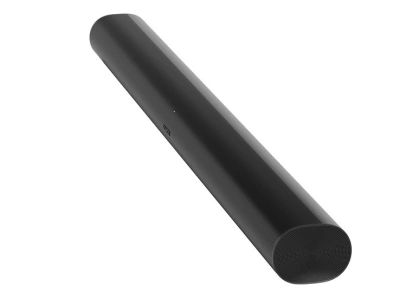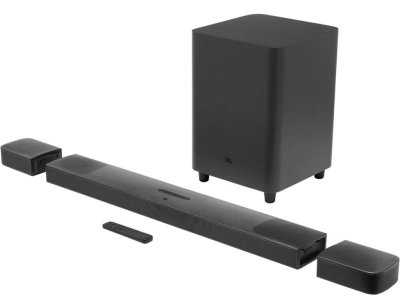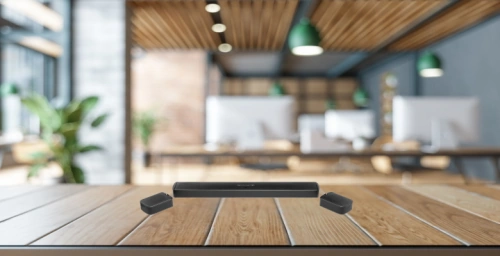Home cinema options have come leaps and bounds in the last year. Just recently, the all-new Sonos Arc debuted, promising to bring award-winning audio in a compact soundbar, while JBL doubled down on compact surround sound with the Bar 9.1.
Adding premium sound to your home entertainment system used to involve miles of cables, wires, and bundles but today, we have powerful audio that’s tailored for TV, movies, video games, and listening to music.
In the debate about buying the Sonos Arc vs JBL 9.1, we find that each system has pros and cons for different buyers. Android users who are adding a soundbar to a large TV in a substantial room will appreciate the features of the JBL Bar 9.1, while Apple users with modest rooms can benefit from the unique design of the Sonos Arc soundbar, making it a better buy for those individuals (>>> Find on Amazon).
Sonos Arc vs JBL 9.1 Side by Side:
| Sonos Arc | JBL 9.1 | |
|---|---|---|
 |  |
|
| Power (Watts) | 110W | 820W |
| Connectivity Options | HDMI | Wi-Fi, HDMI |
| Subwoofer | No | Yes |
| Dimensions (inches) | 3.4 x 45 x 4.5 | 40.63 x 15.04 x 19.21 |
| Price | Find on Amazon B&HPhotoVideo | Find on Amazon B&HPhotoVideo |
Sonos Arc with Dolby Atmos

The Sonos Arc was a much-anticipated addition to home theater options bringing the 3D surround sound experience and Dolby Atmos soundbar performance in a compact soundbar. It comes with Amazon Alexa and Amazon Music ready-to-use and is compatible with Apple AirPlay 2 for wireless music streaming. The slim design houses a powerful group of speakers for lifelike and amazing sound quality.
Speakers
The Sonos Arc soundbar uses 11 drivers, each with its own Class-D amplifier. Eight elliptical woofers provide depth of sound quality and a surprising amount of bass. Silk-dome tweeters are ideal for reproducing crisp audio and high-pitch frequency response.
Sonos lays this bar out with three tweeters engineers angled precisely to ensure realistic, room-filling music playback. Sonos does not use the typical wattage ratings to represent the power-handling abilities, but users report that it’s plenty loud.
Connection Technology
The Sonos Arc connects to your TV through an HDMI-to-HDMI eArC or HDMI ARC cable (HDMI cable included). Only some very recent model televisions will have this connector.
Everyone else will connect to the digital audio out port using an optical-to-digital adapter to hook up to the optical outputs (included). Connecting to a regular HDMI port will not provide audio.
The Sonos Arc can enhance audio to help make voices more clear, even during the loudest action scenes. The Sonos app settings allow the custom tuning of bass, treble, and loudness for your specific preferences.
Sonos S2 App
When you set up the Sonos Arc, you’ll need to download and run the Sonos app. It’ll walk you through the remainder of the setup process. From the app, you’ll have control over track selection, and volume, and you can search the internet for music.
A recent firmware update allows Android 8.0-users and iOS 12 users access to the Sonos Arc app. Other OS systems supported include Fire 7 and iPad 13. Smartphone or tablet users on other OS versions will need to upgrade their devices to use all of the features of the S2 app.
Key Features
- 11 Class-D drivers, including two upfiring elliptical woofers and three silk-dome tweeters
- Dolby Atmos sound for 3D realism
- Dolby Digital DTS :X supported
- Works with Sonos Arc S2 app and Apple AirPlay2
- Built-in Amazon Alexa voice control
- Far-field microphone for TruePlay™ automatic room acoustic tuning
- Voice enhancement
- Compatible with wireless subwoofers and surround speakers, sold separately
Pros
- Outstanding audio quality from a compact soundbar
- Sleek design is unobtrusive
- Dolby Atmos sound is fantastic
Cons
- Numerous Android users report issues with connecting to smart phones
- No ability to custom tune speakers individually
- Does not include wall mount bracket
- Subwoofer and surround sound speakers more than double the price
Who We Think the SoNos Arc is Perfect For
The Sonos Arc is a wonderful soundbar that produces unbelievable and realistic sound from stationary speakers. To take the most advantage of this soundbar audio system, you’re going to want a TV that’s compatible with eARC and a smartphone that’s compatible with the S2 app.
The Sonos Arc is the ideal system for rooms where a surround system isn’t practical but you still want great frequency response. This is a great choice for a bedroom or a smaller living room, but it sounds equally wonderful in a home entertainment room. The reputation as one of the best soundbars available is well-deserved.
The Sonos Arc is a poor choice for Android users who prefer Google Assistant over Siri. It is designed to work with iOS, which is a limitation many buyers will encounter.
JBL Bar 9.1 Wireless Surround Sound

JBL hustled the 9.1 system onto the market just before the global Coronavirus pandemic shut everything down, which led to some early units that were a little buggy. Since then, the true potential of this surround sound system/ soundbar is being revealed. It’s powerful, versatile, and broadly compatible with different devices. This new soundbar design might just be the complete package you have been looking for.
Speakers
A neat trick from this system is the wireless, battery-powered side speaker system that can unclip and be set wherever you want to fill in the frequency response. A wireless subwoofer that measures a full 10-inches provides deep bass and adds drama to the audio on movies, TV, and games. Four elliptical woofers and two up-firing full-range drivers produce the best sounds and are complemented by three tweeters.
The JBL 9.1 wireless subwoofer packs 300 watts of total power on its own. The main soundbar can push 400 watts, while the pair of detachable speaker pods are 60 watts each. In all, the system produces up to 820 watts of room-flooding 3D sound.
Connection Technology
The JBL Bar 9.1 gives buyers some options for how they would like to connect the speaker to their TV and what apps they want to use to control the system. The JBL bar 9.1 is compatible with Dolby Atmos and DTS:X, so you get great sound from Blu-Ray discs and rentals from RedBox. It’s really simple to stream tunes from a smartphone using Bluetooth and Apple AirPlay works great. There is no additional JBL app to download for this system.
Key Features
- Dolby Atmos & DTS:X compatible
- 9 drivers and a wireless 10” subwoofer
- Detachable side speakers provide 3D surround sound effect
- 6+ hours runtime on wireless speakers
- Includes all cables and mounting brackets
- Apple AirPlay and Android QPlay compatible for wireless streaming
Pros
- Detachable speakers provide surround sound when you want it
- Tons of power from a compact system
- Easy to set up and compatible with different sources
Cons
- US version does not include end caps or brackets for detachable speakers
- System will not work when side speakers are out of charge
- Lacks tunability of individual speakers
Who We Think the JBL Bar 9.1 is Perfect For
This is a great setup that provides tons of power. It’ll work best for people who are setting up a home theater room, have a large room they want great sound in, and makes a great choice for a patio theater.
The range of connection options available from the Bar 9.1 means it’ll be easier to set up than the Soros Arc soundbar, so you don’t necessarily need the newest and best TV and smartphone to take advantage of the awesome sound.
Conclusion
As you can see, these two products offer significant amounts of audio enhancement, but they tend to reach different audiences. The JBL Bar 9.1 provides excellent volume but is not as clear at vocals.
However, the subwoofer offers the optimal frequency range to create a virtual surround effect. It can easily overpower a smaller room, making it more appropriate for larger spaces (>>> Check on Bhphotovideo).
The Sonos Arc provides a cleaner, crisper-sounding frequency range to audio tracks, but lacks the feel-it-in-your-pants bass the JBL brings. However, in a smaller room, the up-firing speakers provide a perfect complement of deep bass and broad midrange sound. The Sonos is more difficult to set up and requires the newest and best technology to function at its potential.